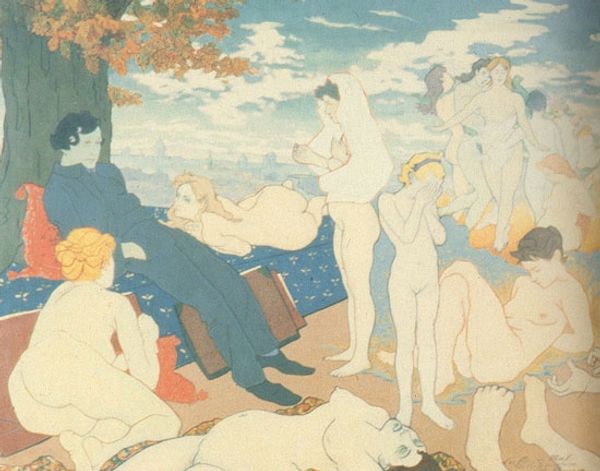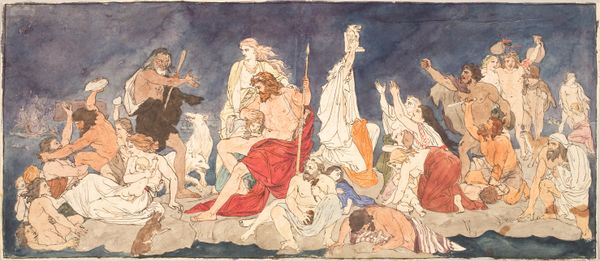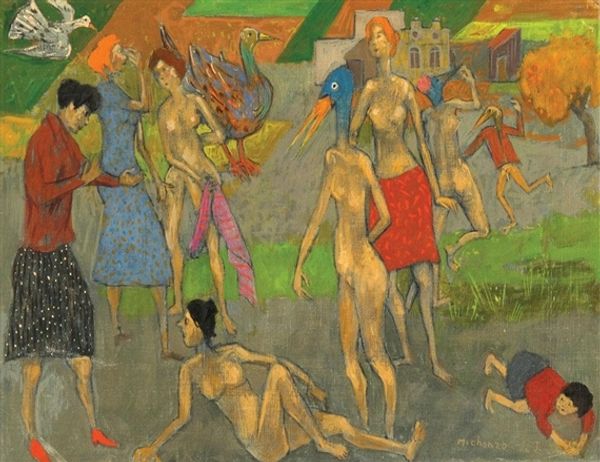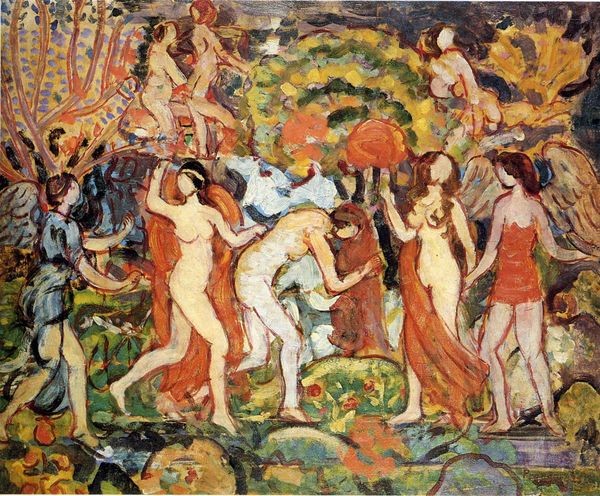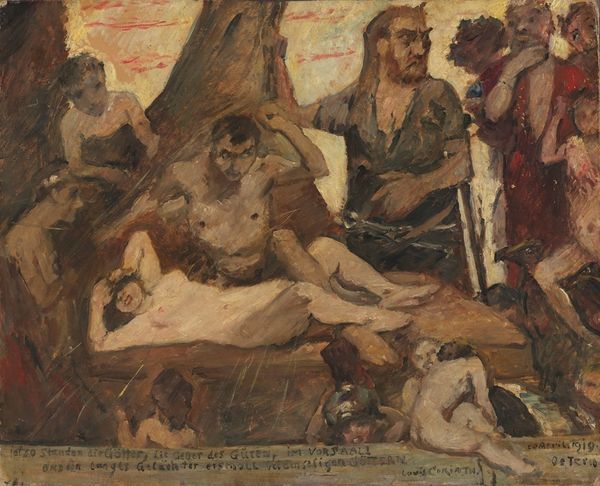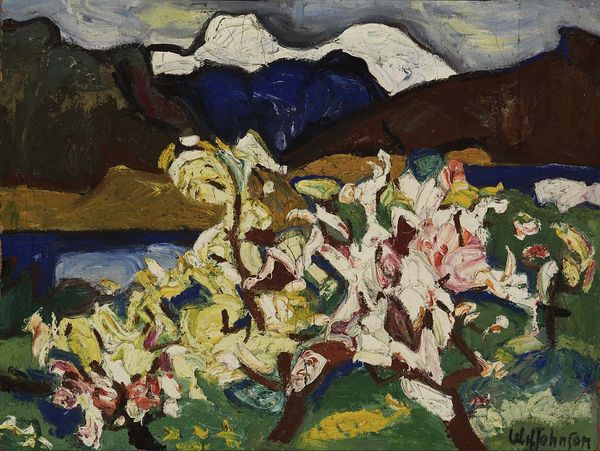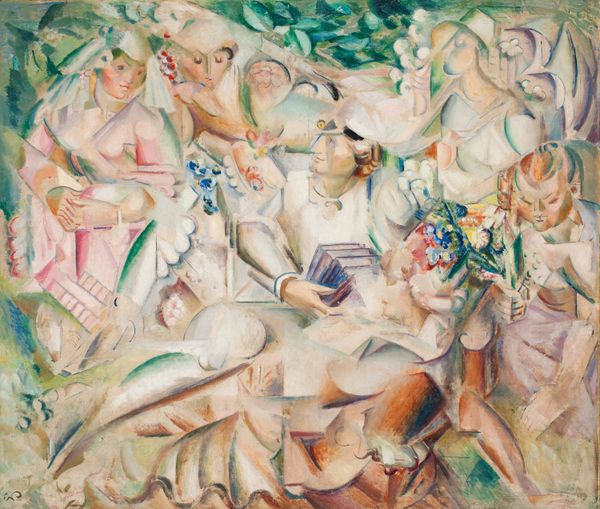
painting, oil-paint
#
allegory
#
painting
#
oil-paint
#
oil painting
#
symbolism
#
history-painting
#
nude
Dimensions: 79 x 148 cm
Copyright: Public domain
Editor: This is Charles Maurin's "L'aurore du travail," or "The Dawn of Labor," an oil painting from 1891. The figures are mostly nude, and there's this mix of classical and industrial imagery. The whole piece feels like it's surging forward. What do you see in this work? Curator: I see a potent allegory, steeped in the socio-political anxieties of the late 19th century. Note the figures' nudity— it gestures towards classical ideals of freedom and the body politic, yet it's juxtaposed with the grim reality of industrialization looming in the background. What does that contrast suggest to you? Editor: I guess it's saying something about the cost of progress? Like, industrialization is stripping away something essential, leaving us bare? Curator: Precisely. Think about the rise of socialist movements at this time. The painting evokes the symbolism of the struggle, doesn't it? The figures, seemingly driven forward, towards that factory skyline, which could reflect on a revolutionary, activist spirit. But also notice, who is being carried, who is struggling, who has agency? These considerations of who benefits, who pays the price, for social progress is still very timely. How does Maurin represent that in terms of gender? Editor: It's a little confusing. There seems to be both male and female figures leading the charge, but I'm not entirely sure what message Maurin wanted to send. Curator: And that ambiguity is key! This painting doesn't offer a simple answer. It prompts us to grapple with these complicated questions surrounding labor, exploitation, and emancipation, filtered through a lens that intersects class, gender, and perhaps even a utopian vision. The title implies dawn or some type of future for labor, or a more optimistic note. The composition, however, appears unresolved. Editor: It's interesting to consider the work in its historical context. It certainly adds layers that I hadn't immediately noticed. Curator: Indeed. By acknowledging these complex issues that intersect history, sociology and artistic vision, it might broaden the viewing lens and impact how the painting communicates in present times.
Comments
No comments
Be the first to comment and join the conversation on the ultimate creative platform.
